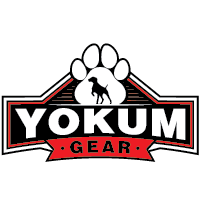Choosing the right dog lead and collar set is essential for ensuring the safety and comfort of your beloved pet. A good lead and collar not only provide control during walks but also serve as a means of identification and training. With the plethora of options available on the market, it can be overwhelming to make a choice. This article will guide you through the factors to consider when selecting the perfect lead and collar set for your dog.
Factors to Consider When Choosing a Collar
Size and Fit
The foremost consideration when choosing a collar is ensuring it fits your dog properly. A collar that is too tight can cause discomfort and injury, while one that is too loose may slip off. Measure your dog's neck with a soft measuring tape and add an extra inch or two to ensure a comfortable fit. The collar should be snug but not too tight; ideally, you should be able to slip two fingers underneath it.
Material
Dog collars are available in various materials, each with its own set of advantages and disadvantages:
- Nylon: Durable and easy to clean, nylon collars are ideal for everyday use. However, they may cause chafing on dogs with sensitive skin.
- Leather: Known for their durability and classic look, leather collars are generally more comfortable for long-term wear. They do require regular maintenance to prevent drying and cracking.
- Metal: Often used for training, metal chain collars provide effective control but should be used with caution to avoid injury.
- Eco-Friendly Materials: Some collars are made from recycled materials or organic fabrics, which are better for the environment and can be a good choice for eco-conscious pet owners.
Buckle and Closure Type
Collars come with different types of buckles and closures:
- Buckle Collar: Similar to a belt buckle, these provide a secure fit and are usually made of metal or plastic.
- Quick-Release Collar: Featuring a snap closure, these are convenient for easy on and off but need to be sturdy to avoid accidental release.
- Martingale Collar: Also known as limited-slip collars, these are perfect for dogs with narrow heads, like Greyhounds, as they tighten slightly when pulled to prevent slipping.
Safety Features
Consider collars with added safety features such as reflective strips or LED lights for better visibility during nighttime walks. Additionally, personalized collars with your contact information can be invaluable if your pet gets lost.
Factors to Consider When Choosing a Lead
Length
The length of the lead is crucial for control and comfort. Standard leads are usually 4 to 6 feet long, offering a balance between freedom and control. For training or more control in busy areas, a shorter lead may be preferable. Retractable leads can extend up to 30 feet, providing more freedom but less control.
Material
Like collars, leads come in various materials:
- Nylon: Strong and easy to clean, but can cause friction burns on your hands if a dog pulls hard.
- Leather: Offers a comfortable grip and is durable but requires maintenance.
- Chain: Effective for dogs that chew on their lead, but they can be heavy and awkward to handle.
- Rubber or Biothane: Waterproof and easy to clean, making them ideal for outdoor adventures.
Handle Comfort
Look for leads with padded handles to prevent discomfort during long walks. Some leads also feature additional padded sections or secondary handles for better control in urban environments or during training sessions.
Additional Features
Some leads come with additional features like built-in waste bag dispensers, carabiners, or multi-functionality, allowing them to be used as a waist belt for hands-free walking or as a tether.
Conclusion
Choosing the perfect dog lead and collar set involves considering multiple factors, including size, material, safety, and additional features. By prioritizing your dog's comfort and your needs as an owner, you can find a set that enhances your daily walks and ensures the safety and happiness of your furry friend.

